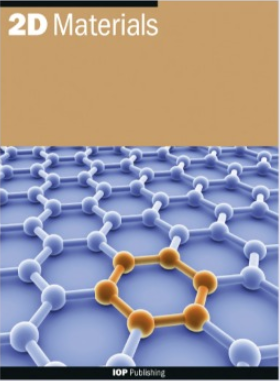When 2D Materials meet metals
IF 4.5
3区 材料科学
Q2 MATERIALS SCIENCE, MULTIDISCIPLINARY
引用次数: 0
Abstract
This review delves into the intricacies of the interfaces formed between two-dimensional (2D) materials and metals, exploring a realm rich with fundamental insights and promising applications. Historically, our understanding of 2D materials emanated from studies employing dielectric substrates or suspended samples. However, integrating metals in the exfoliation and growth processes of 2D materials has opened up new avenues, unveiling various shades of interactions ranging from dispersive forces to covalent bonding. The resulting modifications in 2D materials, particularly transition metal dichalcogenides (TMDCs), offer more than a theoretical intrigue. They bear substantial implications for (opto)electronics, altering Schottky barrier heights and contact resistances in devices. We explore metal-mediated methods for TMDC exfoliation, elucidating the mechanisms and their impact on TMDC-metal interactions. Delving deeper, we scrutinize the fundamentals of these interactions, focusing primarily on MoS2 and Au. Despite the recent surge of interest and extensive studies, critical gaps remain in our understanding of these intricate interfaces. We discuss controversies, such as the changes in Raman or photoemission signatures of MoS2 on Au, and propose potential explanations. The interplay between charge redistribution, substrate-induced bond length variations, and interface charge transfer processes are examined. Finally, we address the intriguing prospect of TMDC phase transitions induced by strongly interacting substrates and their implications for contact design.当二维材料与金属相遇
这篇综述深入探讨了二维(2D)材料与金属之间形成的界面的复杂性,探索了一个富有基本见解和应用前景的领域。从历史上看,我们对二维材料的理解源自采用介电基底或悬浮样品进行的研究。然而,将金属融入二维材料的剥离和生长过程开辟了新的途径,揭示了从分散力到共价键的各种相互作用。二维材料,尤其是过渡金属二钙化物(TMDCs)中的改性结果不仅仅是理论上的有趣之处。它们对(光)电子学产生了重大影响,改变了肖特基势垒高度和器件中的接触电阻。我们探讨了金属介导的 TMDC 剥离方法,阐明了其机理及其对 TMDC-金属相互作用的影响。我们深入研究了这些相互作用的基本原理,主要侧重于 MoS2 和金。尽管最近人们对这些错综复杂的界面兴趣大增并进行了广泛的研究,但我们对这些界面的理解仍然存在重大差距。我们讨论了一些有争议的问题,如 MoS2 在金上的拉曼或光辐射特征的变化,并提出了可能的解释。我们还研究了电荷再分布、基底诱导的键长变化和界面电荷转移过程之间的相互作用。最后,我们探讨了强相互作用基底诱导的 TMDC 相变这一引人入胜的前景及其对触点设计的影响。
本文章由计算机程序翻译,如有差异,请以英文原文为准。
求助全文
约1分钟内获得全文
求助全文
来源期刊

2D Materials
MATERIALS SCIENCE, MULTIDISCIPLINARY-
CiteScore
10.70
自引率
5.50%
发文量
138
审稿时长
1.5 months
期刊介绍:
2D Materials is a multidisciplinary, electronic-only journal devoted to publishing fundamental and applied research of the highest quality and impact covering all aspects of graphene and related two-dimensional materials.
 求助内容:
求助内容: 应助结果提醒方式:
应助结果提醒方式:


